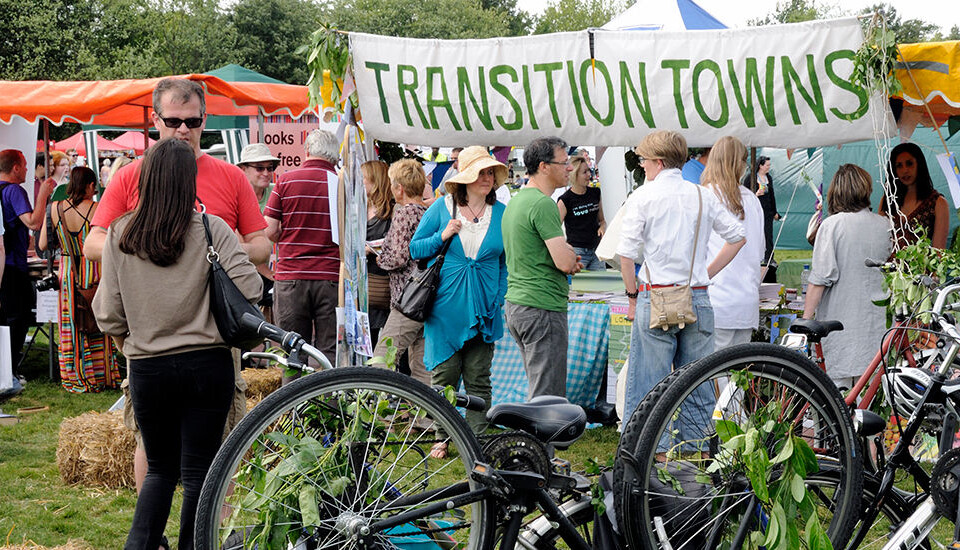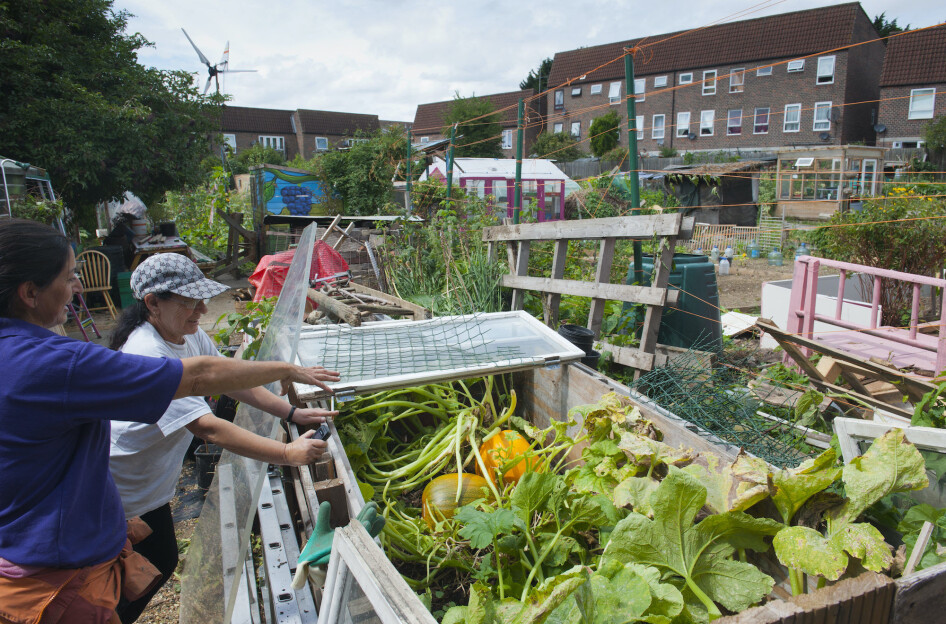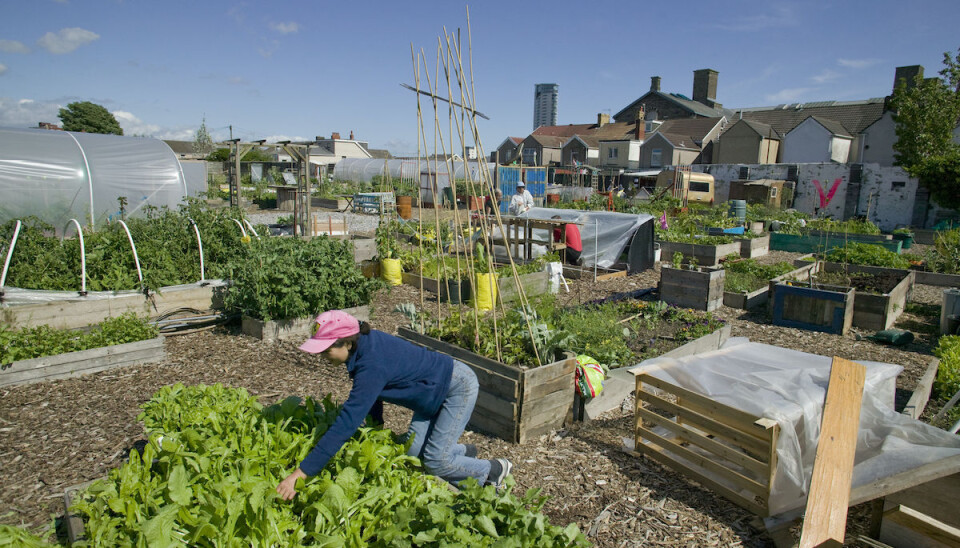This article is produced and financed by NTNU Norwegian University of Science and Technology - read more

Buy less, be happier and build a healthy planet
You may feel like you can’t do anything to stop climate change. But climate activists who joined in grassroots movements managed to cut their carbon footprints and were still happier than their non-activist peers, new research shows.
US President Donald Trump is busy dismantling climate policies in the largest economy in the world. Europeans, while recognizing their climate obligations, still have among the highest carbon footprints on the planet.
So what’s a concerned global citizen to do? Can people’s actions — outside of large-scale government interventions —make a difference?
A new study suggests the answer is yes.
A more positive outlook on life
When researchers looked at members of grassroots movements designed to cut climate impacts and compared them to non-activist peers, they found that the activists not only cut their carbon footprints but reported greater lifestyle satisfaction.
“Typically, as people grow wealthier, they tend to upscale their material living standards, thus consuming more and emitting more climate-damaging gases,” said Dr. Gibran Vita, who was the co-first author of the study. Vita did his PhD at NTNU’s Industrial Ecology Programme and is now an assistant professor at the Open University in the Netherlands. “But members of climate initiatives keep their spending low key even if their incomes increase. And consuming less didn’t seem to take a toll on their joy.”
Instead, Vita and his co-first author, Diana Ivanova and their colleagues found, initiative members were 11-13 per cent more likely to look positively on their own life when compare to non-members, while still cutting their total emissions by 16 per cent.
The results of their study were just published in the academic journal “Energy Research and Social Science.”
From eco-villages in Romania to food cooperatives in Italy
The researchers undertook their study under the umbrella of the Green Lifestyles Alternative Models and Upscaling Regional Sustainability (GLAMURS) project, funded under the EU’s 7th Framework Programme.
Among the different sub-projects, researchers conducted a comprehensive survey to compare the lifestyles of people involved in different kinds of local sustainability-oriented grassroots initiatives to people from the same geographical regions who weren’t members.

The GLAMURS researchers used the survey information to look at the carbon footprints and well-being of members and non-members of initiatives in four countries: three food and sustainable consumption cooperatives in Spain, two eco-villages in Romania, five food cooperatives in Italy and members of the “Transition Town Network” in Germany. Transition Towns are part of a global social movement that offers ideas and support to cities and towns who want to build more sustainable communities.
While decisions around diets and clothing may reflect individual preferences, mobility and housing choices are often limited by long-lived infrastructure, urban design, public transport options and commuting distances.
In all, the researchers had information from 141 people from the 12 different grassroots initiatives. They also had information from 1476 non-members spread across the four countries.
They then used a standardized questionnaire to gather data on environmental behaviours, consumption, socio-economic and demographic status, life satisfaction and living standards, and designed a carbon footprint model to estimate greenhouse gas emissions for individuals in the survey.
When all the calculations were completed, they found that people involved in sustainability initiatives had carbon footprints that were 16 per cent lower, on average, than non-members.
Biggest cuts in food and clothing
“We found that initiative members eat more plant-based food and used more secondhand clothing,” said Ivanova, who also did her PhD at NTNU’s Industrial Ecology Programme and is now a research fellow at the University of Leeds. “Members were able to cut their carbon footprints by 43 per cent for food-related emissions and 86 per cent for clothing-related emissions.”

The researchers also found that even though initiative members tended to ride their bicycles more and live with lower home temperatures in the winter as compared to non-members, their carbon footprints for housing and transport were very similar to people who weren’t involved in initiatives.
An important factor for this, Ivanova said, is that choices and emissions from transport and housing are more strongly tied to existing unsustainable infrastructure.
In other words, you may want to travel more by public transport, but if there’s no public transport system in your area, you can’t. And you may want to use less energy to keep your house warm, but if you’re house isn’t adequately insulated, you can only turn the heat down so much before your pipes freeze.
“While decisions around diets and clothing may reflect individual preferences, mobility and housing choices are often limited by long-lived infrastructure, urban design, public transport options and commuting distances,” she said.
Initiative members weren’t freezing in the dark
So what did wearing used clothing and more sweaters in the winter do to people who chose to try to cut their carbon footprints?
When the researchers looked at survey questions concerning how initiative members compared to non-members in terms of life satisfaction, they found that members were 11-13 per cent more likely to think positively about their own life.
Although the researchers themselves didn’t try to figure why this was the case, they cited other research that suggests that being less driven by materialistic aspirations and more internally motivated is satisfying for people.

“In general, research shows that altruistic behavior, including volunteering, is positively associated with pro-environmental behavior, higher well-being and lower emissions,” Vita said.
“It’s also something to think about with the upcoming the holiday season,” Ivanova said. “The holiday season often encourages overconsumption, materialism and a work-and-spend cycle with negative consequences for environmental and human well-being. Our study adds to the evidence on the high price of materialism – because even though we may believe otherwise, beyond a certain basic consumption level, filling our lives with stuff is generally corrosive for well-being.”
More government and individual efforts needed
In general, research has shown that individual pro-environmental attitudes do not lead to lower carbon footprints, said Edgar Hertwich, senior author of the article and international chair and professor at NTNU’s Industrial Ecology Programme. That’s part of what makes this particular study encouraging, he said.
“Finding measurable reductions in sustainability initiatives is hence a pleasant surprise. It seems like by acting in concert with other, like-minded people, we can more easily fulfil our sustainability aspirations,” he said.
Nevertheless, even though initiative members were able to cut their carbon footprints, the researchers found that it wasn’t enough if society is going to hold global warming to a 2°C average.
And the difference wasn’t small, either. The average carbon footprint of initiative members was fully five times higher than the per capita amount needed to reach targets.
“There are many ways for people and the planet to coexist harmoniously,” Vita and Ivanova said. “Grassroots initiatives are an overlooked, yet essential part of the solution. If we stunt their growth by limiting their access to resources or if they are hindered by bureaucracy, we will lose out on an important mechanism for social change — experimentation. But all our hopes on people’s willingness to voluntarily change is unrealistic. We also need societies, cities and communities that offer low-carbon choices as the default option.”
Reference:
Happier with less? Members of European environmental grassroots initiatives reconcile lower carbon footprints with higher life satisfaction and income increases. Gibran Vita, Diana Ivanova, Adina Dumitru, Ricardo Garcia-Mira, Giuseppe Carrus, Konstantin Stadler, Karen Krause, Richard Wood, Edgar G. Hertwich. Energy Research & Social Science Volume 60, February 2020, 101329.


































